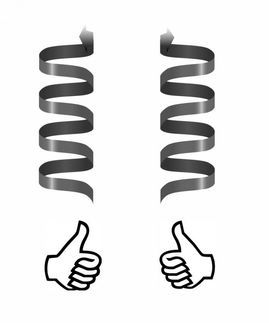University of Houston gets $1.2 million grant for alternative energy research
The University of Houston has received a $1.2 million grant from the Office of Naval Research to help design the next generation of technologies for the alternative energy industry.
In all, the ONR awarded a total of $1.5 million to UH, the Naval Research Laboratory and the University of New Mexico to develop new thin-film solar cells, thin-film batteries and nano-sensors for wind turbine blades.
"This is a great opportunity to develop technologies that will strengthen and expand the use of alternative sources of energy globally. With energy demand increasing, considerable effort and investment is going into new energy generation and storage," said physics professor Seamus "Shay" Curran, the lead researcher on the UH project and director of UH's Institute for NanoEnergy. "This project also falls right in line with the university's education and research goals and its mission to become a Tier One institution."
Curran and his research team will focus on improving the efficiency of thin-film solar cells in terms of storing solar energy, while the Naval Research Laboratory will work on developing the thin-film battery storage systems.
Thin-film solar cells are lightweight, durable and easy to use. Researchers are trying to improve efficiency in terms of their storage capability so that they are competitive with silicon cells.
Thin-film solar cells are made of plastic-based materials that are no more than 65 mm thick. They are aligned vertically so that light is channeled into the materials to improve their solar absorption, and they have a natural protective barrier that potentially allows them to survive longer than standard flat-panel plastic devices.
This marks the next research phase for Curran, who has already created several innovations that relate to the next generation of solar devices used to produce electricity. These devices are all plastic, as opposed to the current devices that use silicon or metal alloys, which take up space and can be costly.
"People want dynamic changes in solar power. They want real-world applications developed quickly," Curran said.
Curran's team also will be working on developing nanosensors for wind turbine systems. These sensors could be embedded in offshore wind turbines, making it possible to monitor the system's structural "health" from a distance.
The nanosensors are based on polymer-nanotube composites, using their electrical properties as a way to detect changes in environmental conditions. In 1998, Curran published the first nanotube-polymer composite paper in Advanced Materials dealing with the electronic nature of such materials. That evolutionary step has taken over a decade to come to fruition. Along the way, Curran reported high conductivity composites in 2009 in the Journal of Applied Physics, and the next stage is to build the embedded sensors.
The University of New Mexico's Anderson School of Management will lead the work in building a business roadmap for the new technologies developed by researchers at UH and the Naval Research Laboratory.
Other news from the department science
These products might interest you
Most read news
More news from our other portals
See the theme worlds for related content
Topic world Sensor technology
Sensor technology has revolutionized the chemical industry by providing accurate, timely and reliable data across a wide range of processes. From monitoring critical parameters in production lines to early detection of potential malfunctions or hazards, sensors are the silent sentinels that ensure quality, efficiency and safety.

Topic world Sensor technology
Sensor technology has revolutionized the chemical industry by providing accurate, timely and reliable data across a wide range of processes. From monitoring critical parameters in production lines to early detection of potential malfunctions or hazards, sensors are the silent sentinels that ensure quality, efficiency and safety.
































































